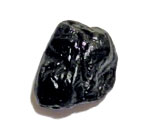Guideline Calls for Pre-K ADHD Evaluation
Posted by: admin on: November 30, 2011
With the surge in diagnosis of Attention Deficit & Hyperactivity Disorder catching the behavior in the early days and constant evaluation till their teens is a must. Here is the revised guideline issued by the AAP.
Team@CMHF
Primary care physicians should begin evaluating children for attention deficit hyperactivity disorder (ADHD) at age 4 and continue through age 18, according to a new clinical guideline from the American Academy of Pediatrics.
An accumulation of evidence in recent years has enabled diagnosis and management of ADHD in a broader pediatric population. Earlier versions of the guidelines covered children ages 6 to 12.
“There was enough evidence that we could feel comfortable about the criteria being appropriate for preschoolers and that the process for making the diagnosis was similar enough to what primary care physicians were doing with the elementary school-age children that it would be appropriate to recommend their diagnosing to four years of age,” said Mark Wolraich, MD, of the University of Oklahoma in Oklahoma City, and chair of the writing committee for the updated guideline.
A similar accumulation of evidence led to expansion of the age range to 18, he added.
Consistent with the broader age range, the guideline addresses clinical issues specific to preschoolers, adolescents, and teenagers.
The revised guideline includes recommendations for managing pediatric patients who exhibit some signs and symptoms of ADHD but do not meet current diagnostic criteria for the condition. Wolraich said such information would be particularly applicable to primary care physicians as opposed to mental health special
The new guideline includes a summary of six key action statements:
1.Primary care physicians should initiate an ADHD evaluation for any child 4 through 18 who has school or behavioral problems and symptoms of inattention, hyperactivity, or impulsivity.
2.As a prerequisite for diagnosis of ADHD, a patient’s symptoms and behavior must meet the criteria set forth in the Diagnostic and Statistical Manual of Mental Disorders, Fourth Edition. Physicians should rely primarily on information from parents, guardians, school, and mental health specialists involved in the child’s care. Additionally, physicians should rule out any alternative causes for the child’s behavior and symptoms.
3.The clinical evaluation should include assessment of conditions that might coexist with ADHD, including emotional or behavioral, developmental, and physical conditions.
4.ADHD should be viewed as a chronic condition and patients with the condition should be considered special needs children and adolescents.
5.The approach to treatment of ADHD varies according to patient age. For preschool-age children, behavioral interventions should be considered first-line therapy. If resources to provide such interventions are not available, the physician should carefully weigh the risks of drug therapy at an early age with those associated with delayed diagnosis and treatment.
For children 6 to 11, the AAP recommends combination treatment with medication and behavioral therapy if feasible. Evidence for use of stimulants in this age group is particularly strong. Older children should begin treatment with medication, and physicians might also prescribe behavioral therapy, although the evidence in this age group is not as strong as in the younger patients.
6.Medication for ADHD should be titrated so as to achieve maximum benefit with a minimum of adverse events.
The AAP also will release an update of its ADHD Toolkit, designed as a clinical aid for primary care physicians who diagnose and treat ADHD in children and adolescents.
To help parents understand the new guidelines, the AAP has published an update to its consumer-oriented book “ADHD: What Every Parent Needs to Know.” Updated information also has been added to the AAP’s “Healthy Children” website.
Search
- drchasrani: Difficult to get such a data, authenticated at that. Try Times of India online library
- rakesh pore: hi, where can i get genuine information about "10 most common drugs sold in india?" i want it for a local project
- nilesh dutta: sir, Plz give detail about MBA Sports Management Thanks and Regards


Leave a Reply